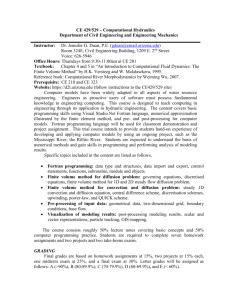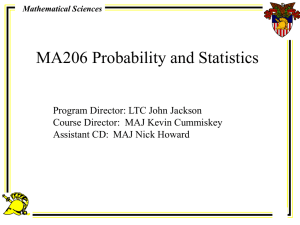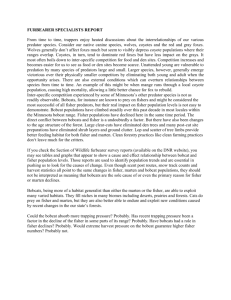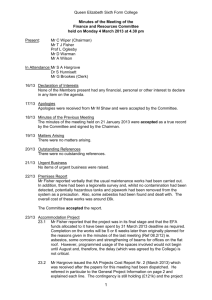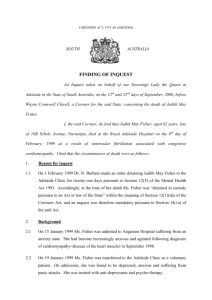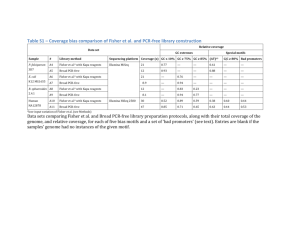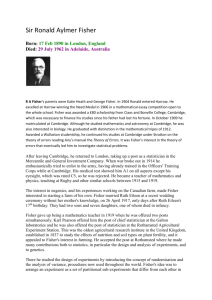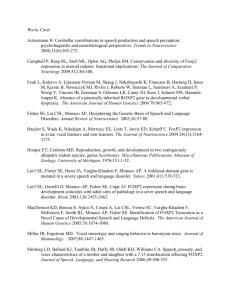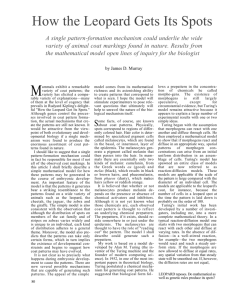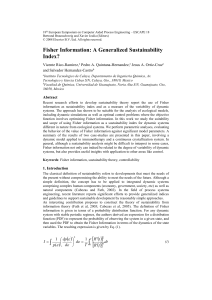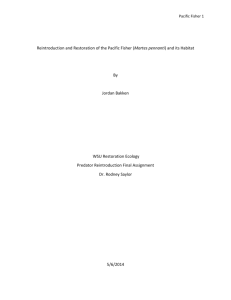Finite Difference Schemes for Fisher´s Equation
advertisement
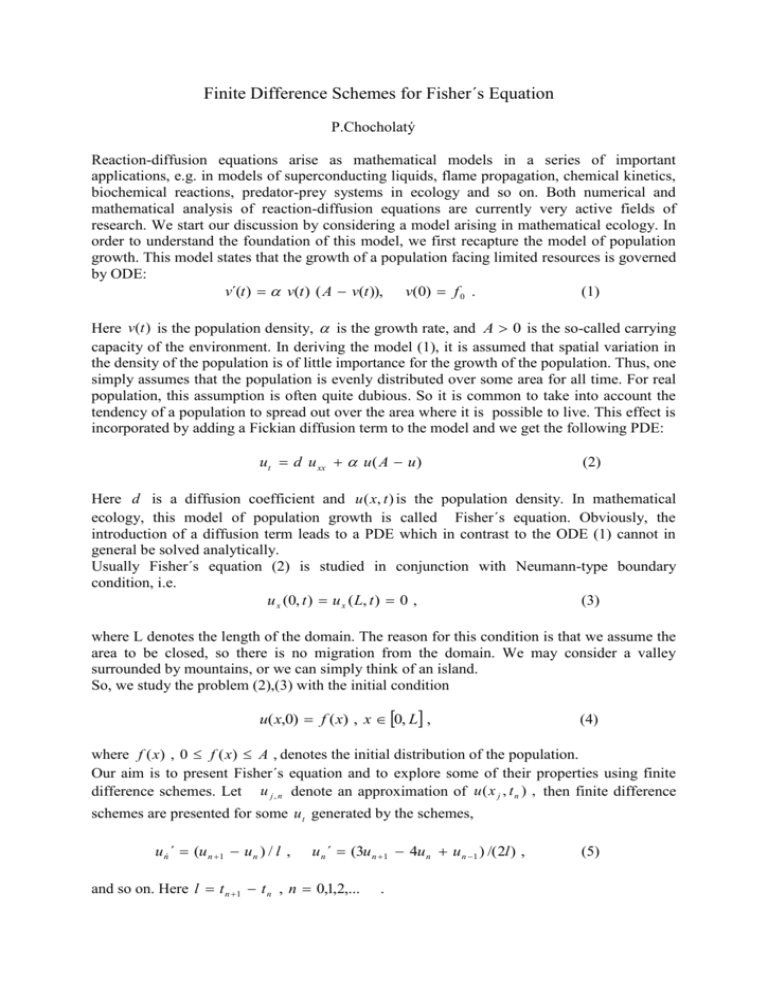
Finite Difference Schemes for Fisher´s Equation P.Chocholatý Reaction-diffusion equations arise as mathematical models in a series of important applications, e.g. in models of superconducting liquids, flame propagation, chemical kinetics, biochemical reactions, predator-prey systems in ecology and so on. Both numerical and mathematical analysis of reaction-diffusion equations are currently very active fields of research. We start our discussion by considering a model arising in mathematical ecology. In order to understand the foundation of this model, we first recapture the model of population growth. This model states that the growth of a population facing limited resources is governed by ODE: (1) v´(t ) v(t ) ( A v(t )), v(0) f 0 . Here v (t ) is the population density, is the growth rate, and A 0 is the so-called carrying capacity of the environment. In deriving the model (1), it is assumed that spatial variation in the density of the population is of little importance for the growth of the population. Thus, one simply assumes that the population is evenly distributed over some area for all time. For real population, this assumption is often quite dubious. So it is common to take into account the tendency of a population to spread out over the area where it is possible to live. This effect is incorporated by adding a Fickian diffusion term to the model and we get the following PDE: ut d u xx u( A u) (2) Here d is a diffusion coefficient and u ( x, t ) is the population density. In mathematical ecology, this model of population growth is called Fisher´s equation. Obviously, the introduction of a diffusion term leads to a PDE which in contrast to the ODE (1) cannot in general be solved analytically. Usually Fisher´s equation (2) is studied in conjunction with Neumann-type boundary condition, i.e. u x (0, t ) u x ( L, t ) 0 , (3) where L denotes the length of the domain. The reason for this condition is that we assume the area to be closed, so there is no migration from the domain. We may consider a valley surrounded by mountains, or we can simply think of an island. So, we study the problem (2),(3) with the initial condition u( x,0) f ( x) , x 0, L , (4) where f ( x) , 0 f ( x) A , denotes the initial distribution of the population. Our aim is to present Fisher´s equation and to explore some of their properties using finite difference schemes. Let u j , n denote an approximation of u ( x j , t n ) , then finite difference schemes are presented for some u t generated by the schemes, u ń ´ (u n 1 u n ) / l , u n ´ (3u n 1 4u n u n 1 ) /( 2l ) , and so on. Here l t n 1 t n , n 0,1,2,... . (5)

